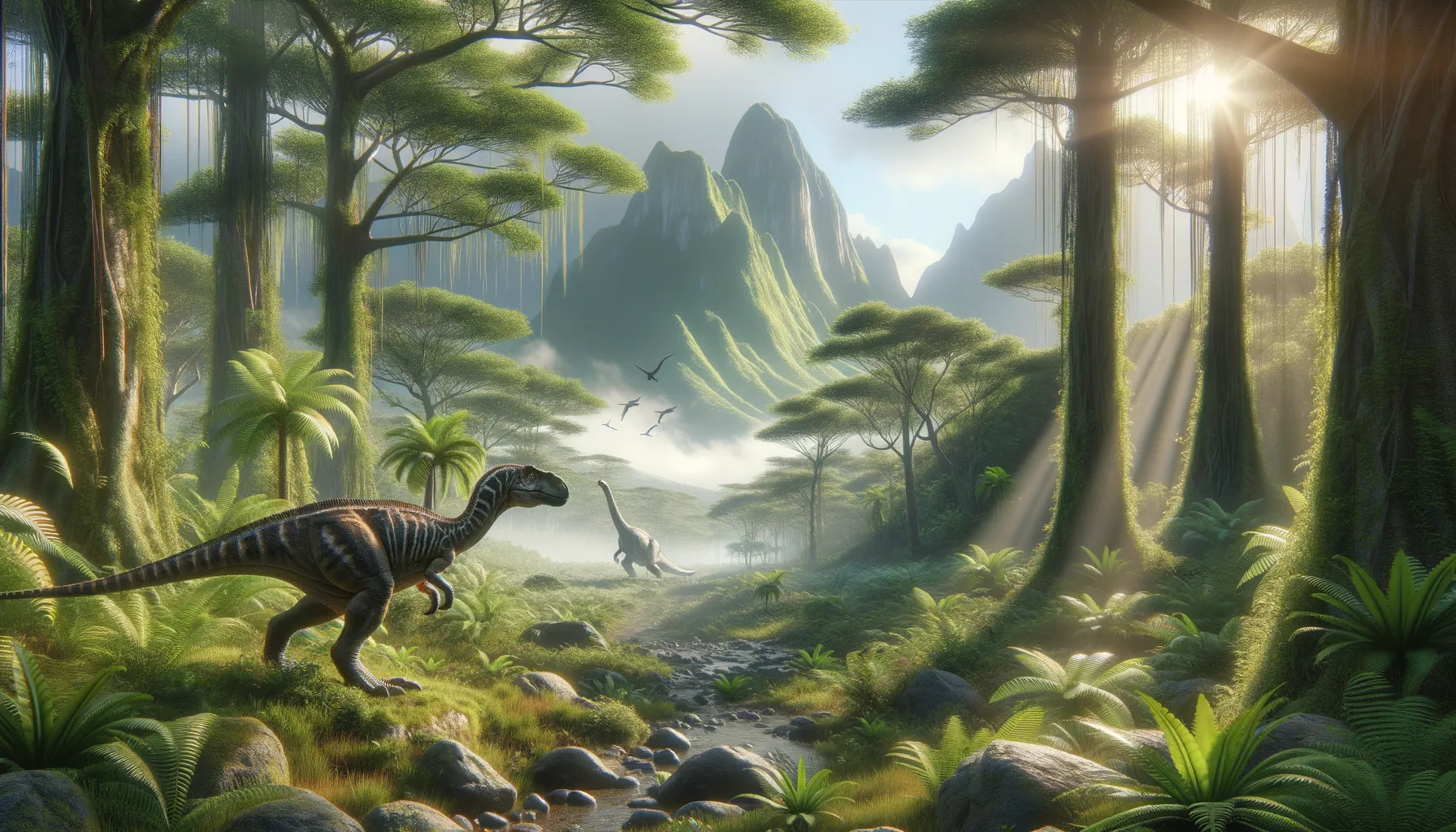
Jeholosaurus
A swift escape artist with a leafy appetite.
Period
Cretaceous
Length
Measured around 1 to 1.2 meters in length.
Height
Stood about half a meter tall at the hips.
Weight
Weighed approximately 10 to 20 kilograms.
Jeholosaurus was a small, herbivorous dinosaur that lived during the Early Cretaceous period. It was discovered in the Yixian Formation of China, known for its well-preserved fossils. Jeholosaurus had a lightweight frame and likely relied on its agility to escape predators. With its bird-like features, it provides significant insights into the evolutionary link between dinosaurs and birds. Its adaptations suggest it thrived in a forested environment rich in plant life.
Diet
Jeholosaurus was herbivorous, feeding primarily on a variety of plants and leaves. Its beak-like mouth was well-suited for cropping vegetation, making it a key player in its ecosystem’s plant life cycle.
Hunting
Being a herbivore, Jeholosaurus did not hunt other animals. Instead, it likely foraged through low-lying foliage, searching for the most nutritious plants to munch on. Its lifestyle revolved around staying alert for predators while feeding.
Environmental challenges
Jeholosaurus faced challenges such as predation from larger carnivorous dinosaurs. Its environment required it to be agile and quick to escape these threats. Seasonal changes likely affected the availability of its plant-based diet, requiring it to adapt to varying food sources. Natural disasters, like volcanic eruptions, may have also posed occasional threats to its habitat.
Speed
Estimated to move at moderate speeds due to its small size.
Lifespan
Likely to live for around 10 to 20 years.
First discovery
Discovered in China in the early 2000s.
Fun Facts
- Jeholosaurus was a small, plant-eating dinosaur that lived about 125 million years ago during the early Cretaceous period.
- This dinosaur was discovered in northeastern China, specifically in the famous Jehol Biota, which is known for its well-preserved fossils.
- Jeholosaurus was about the size of a modern-day rabbit, making it one of the smaller dinosaurs around.
- Despite its small size, Jeholosaurus had a long tail, which might have helped it maintain balance while running.
- The name 'Jeholosaurus' originates from the Jehol area in China and translates to 'Jehol lizard'.
- Jeholosaurus is believed to have been a fast runner, which was likely necessary to escape from predators.
- Fossils of Jeholosaurus have helped scientists understand the diversity and evolution of ornithopod dinosaurs.
Growth and Development
Jeholosaurus likely grew rapidly to reach maturity, a common trait in smaller dinosaurs. Its growth involved developing strong hind limbs to enhance agility and speed. Understanding its embryonic development has provided insights into the reproductive strategies of small herbivorous dinosaurs. Juveniles were probably self-sufficient soon after hatching, allowing them to evade predators from a young age.
Habitat
Jeholosaurus inhabited lush, forested regions in what is now northeastern China. These areas were rich in ferns and bushes, ideal for a herbivorous diet. The climate was temperate, with distinct seasons influencing the growth cycles of plants. The proximity to bodies of freshwater provided vital resources for hydration and sustenance.
Interaction with other species
Jeholosaurus likely coexisted with a variety of other small and medium-sized dinosaurs. It had to be cautious of predators, both terrestrial and avian, as these larger species posed significant threats. Its presence in the ecosystem helped maintain a balanced plant cycle, influencing the populations of other herbivores. Social interactions might have included living in small groups for increased protection.
Natural lifespan
Jeholosaurus likely lived for 10 to 20 years in the wild.
Reproduction
Jeholosaurus likely laid eggs, similar to other dinosaurs. The discovery of eggshell fragments has shed light on its reproductive strategies. Its nesting behavior might have involved communal nests to increase the survival rate of hatchlings. Parental care was possibly minimal, with juveniles being quite independent.
Social behaviour
Jeholosaurus may have lived in small herds to enhance protection against predators. Social interactions could have included cooperation in foraging and raising young. As a relatively small dinosaur, it was likely communicative using visual signals or vocalizations. Territorial behavior was minimal due to its plant-based diet.
Fossil locations
Fossils of Jeholosaurus have primarily been found in the Yixian Formation of Liaoning Province, China. This area is well-known for its exceptional preservation, offering significant insight into early Cretaceous life. Additional fossils in the surrounding regions suggest it had a reasonably widespread distribution. These locations provide essential clues into the diverse ecosystem it once thrived in.
